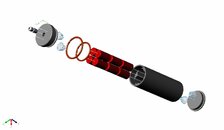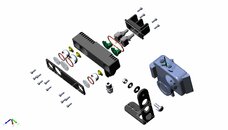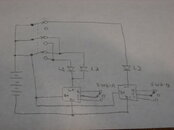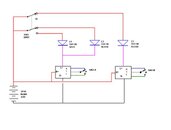Yes, higher voltage means lower current = lighter wire (assuming you have proper switchmode drivers, definitely NOT with linear drivers). Nominally, 12s gives twice the voltage and half the current of 6s. The drain on each cell is identical, so battery life should be identical. The wire losses are lower, so you'd think that's an improvement...
But it ain't necessarily so. It turns out that most drivers are most efficient if the input and output voltages are close. This is really important in linear drivers like the AMC7135 based ones, where efficiency = Vout/Vin. It's less important in switching drivers, but still nothing to sneer at. Doubling the input voltage decreases wire losses, but increases driver losses. Since wire is cheap compared to drivers, the rule of thumb is to optimize for the driver, which for most drivers means keeping Vin/Vout as close to 1 as possible, without violating min/max input voltages.
There are times when you want to break the rule of thumb. To know when to do that requires thorough understanding of the tradeoffs. That means knowing not only the wire losses, but the driver efficiencies at the appropriate operating points. Since this is information you probably don't have access to, I'd go with the rule of thumb. Do you have an option for 4s3p configuration? That's the config that follows the rule, for most drivers.
In a week or so I might be able to get you two prototype 7A drivers. See this link if you're interested High current (SST-90) driver - CandlePowerForums It would work best with 4s configuration.
D
One of the reasons I'm looking at these higher voltages is the attempt to drive one SST-90 in dive light mode, and then two SST-90s in video mode. If I run two LEDs in a series, the Vf doubles, doesn't it? I've been following two threads on CPF developing constant current drivers, and my head design has room for two of said drivers. BUT...
Your driver adds a new twist. It's small enough I might be able to get three of them in the head. It depends on the heat sink area and overall ht. Would you have a footprint drawing?
A real handicap is I just don't understand enough about drivers to know what to do. I'd like to drive each SST-90 with 3.7 - 3.8v on high. Per this thread White LED lumen testing - Page 11 - CandlePowerForums that would give me 1580 - 1965 lumens; X2 for the video floods. Will a linear driver hold the Vf constant?
The other issue is I'm running out of time. I don't get to dive very often, and I have a trip coming up the first week of March. I've been putting off the build trying to decide what to do. I was going to build the canister today, but now I'm not sure how big to make it. I can cut down my current design and make 4s2p, but then I don't have the option to direct drive if the drivers don't come thru in time.
I attached some drawings of the light and canister so you have a visual of what I'm playing with. I'm having a lot of fun with this, just hope it gets done in time.







